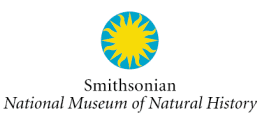Global Volcanism ProgramVolcanoes of the WorldVolcanoes of Mexico and Central America |
 |
Global Volcanism ProgramVolcanoes of the WorldVolcanoes of Mexico and Central America |
 |
Regional Volcanology Highlights from Simkin and Siebert, 1994.
This region was designated "Central America" by CAVW organizers, despite the fact that Mexico is in North America. Mexico dominates the region, with 75% of the population and 80% of the land area, and the total population ranks it 6th among CAVW regions. The Holocene volcanoes of this region, combined with those of South America and the Canary Islands, total 318, meaning that Spanish is spoken around more volcanoes than any other language.
Mexico's early civilizations built the largest city in the Americas and pyramids larger than Egypt's in the second century AD. In 700 AD the Mayans were flourishing from Yucatan to the Pacific, but this civilization fell 200 years later. To the north, though, in the fertile central valley of Mexico, the Toltecs were building the most highly developed pre-Columbian civilization in Latin America. From the mid-12th century the Aztecs dominated, and the first documented new world eruption (Popocatepetl, in 1345) was recorded in the Aztec codices. A population as large as 15 million was present in 1519, when Cortez and 600 conquistadores landed, but within two years the Spaniards had killed the Aztec king and captured their principal city. The spread of the Spanish empire over the region was swift, and most historical volcano documentation has been by Catholic priests since 1520.
To the south, Columbus had made the first European landfall on the Caribbean coast of Costa Rica in 1502, and Balboa first sighted the Pacific, at Panama, in 1513. The Kingdom of Guatemala (so known since 1549) was the political heart of Spanish rule in Central America, and had its largest population. Guatemala declared independence from Spain in 1821, along with the other Central American countries. The region has not been free of political unrest, and the quality of volcano reporting has varied in space and time.
Volcanism has had important impacts on the region. As was learned with the 1982 eruption of El Chichon (and the even larger ca. 260 AD eruption of Ilopango, in El Salvador), the region produces large explosive eruptions. Only South America and Japan have had more VEI >= 4 eruptions in the last 200 years, and only Indonesia has suffered more volcanic death tolls numbering in the thousands.
Reflecting the strong archeological interest in the two regions, this region narrowly edges Region 01 for the largest number of eruptions dated archeologically (six and five dates, respectively). Two of the world's best examples of the formation of "new volcanoes" took place in central Mexico, when the Jorullo and Paricutin cinder cones were added to the Michoacan-Guanajuato volcanic field in 1759 and 1943. The explosive eruption of Guatemala's Santa Maria volcano in 1902 was one of the world's largest 20th-century eruptions.
Most active volcanoes in Region 14 occur in belts produced by subduction of Pacific oceanic crust beneath the southern edge of the North American Plate and the western edge of the Caribbean Plate. Large stratovolcanoes and silicic calderas are found here, but the region also contains many basaltic volcanic fields, particularly in the central valley of Mexico and along the Guatemala-El Salvador border. A few other active volcanoes in northern Mexico are related to extensional tectonics of the Basin and Range Province, which split the Baja California peninsula from the mainland.
In the years 1975-85, only Japan, Indonesia, and Melanesia reported more volcanism than this region, and Smithsonian volcanic activity Bulletins in following years have often carried more reports from this region than from any other (including a record 73 reports from a record 21 volcanoes in 1991).
Honduras was not included in the CAVW but, upon learning of its inland Holocene volcanism, GVP added it to Region 14.